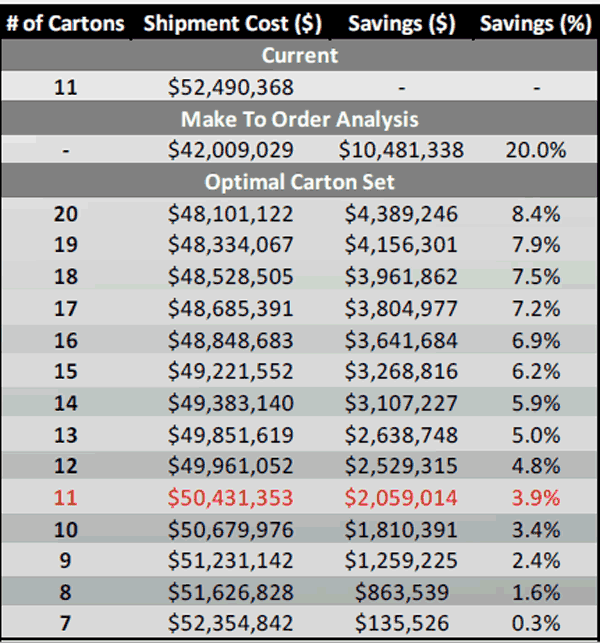Ecommerce and changing order patterns generally are driving more and more customers orders to be shipped through parcel carriers - an expensive way to move freight.
That is especially so after FedEx and UPS began to adopt in recent years so-called dimensional weighing programs in which if for a given carton dimension (length, width, height) the weight is below a given threshold then a surcharge - often substantial - is applied to shipping that carton.
And the "divisor" in the dimensional weight formula continues to move lower, raising the cost to ship affected parcels significantly in many situations.
One way to address the punishing cost of parcel shipping - especially for ecommerce - is to optimize the size of cartoons that will be used over some period of time. Through a combination of looking at history and forecasts for say the next quarter, combined with data on item dimensions and statistics about lines per order and items per line, it is possible to determine the optimal or near-optimal number of sizes to be used.
One company that has a tool to do this is Supply Chain Optimizers. Another, it turns out, is DHL, which during a presentation at this week's WERC conference in Charlotte by Samar Saiy and Chad Claude in part presented results of how this analysis worked out for one apparel/shoe company, as shown in the graphic below:
Optimal Carton Analysis for Apparel/Footwear Company

Source: DHL
As can be seen, the optimal carton mix would have been to use 20 cartons, which would lead to savings on parcel shipping of about $4.4 million or 8.4% .
But that was too many carton types for the company, which went 11 carton sizes, versus the 7 it was using before the analysis. With that configuration, the savings were estimated at $2 million or 3.9%.
Using nothing but cartons build on demand would have delivered a whopping $10 million in savings or 20%, but that approach was not pursued due to throughput concerns.
Any Feedback on our Supply Chain Graphic of the Week? Let us know your thoughts at the Feedback section below.
Your Comments/Feedback
|